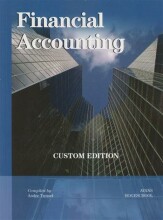Quality managment
13 important questions on Quality managment
What are the dimensions of quality?
- Performance (What are the basic characteristics?)
- Features (are there extra characteristics?)
- Reliability (how long before you need maintenance?)
- Durability (What is the useful life?)
- Conformance (Performed to specifications?)
- Aesthetics (How well appears it to senses?)
- Serviceability (easy to repair, maintain, support or not?)
- Perceived quality (what is reputation?)
What are prevention costs?
What are examples of prevention costs?
- (re) designing the process
- Training employees
- Improve collaboration with suppliers
- Higher grades + faster learning
- Never study anything twice
- 100% sure, 100% understanding
What is the meaning of appraisal costs?
Spending more on prevention costs usually lowers appraisal costs)
What is an example for appraisal costs?
What is meant with external failures?
How do you define the steps of the six sigma process?
- Define the goals of the improvement activity
- Measure the existing process
- Analyse the process
- Improve the process
- Control the new process
What is lean management?
What does lean managment do?
- Value is added any time we physically change our product towards what the customer is buying
- If we are not adding value, we are adding cost or waste
- Lean manufacturing drives the systematic elimination of waste
What are 8 major sources of waste?
- Overproduction-> Production that is more needed or before it is needed
- Waiting -> Wasted time waiting for the next step in a process.
- Unnecessary transportation-> unnecessary movements of products and materials.
- Inappropriate process -> more work or higher quality than is required by the customer.
- Unnecessary inventory-> excess products and materials not being processed.
- unnecessary motion -> unnecessary movements by people (E.g. Walking).
- Defects -> effort caused by rework, scrap and incorrect information
- Underutilization of employees -> underutilizing people's talents, skills and knowledge
Out of which steps does the deming cycle consist?
- Plan -> select a process needed improvement, develop a plan and improvement measures
- Do -> implement plan, monitor improvements
- Check -> analyze data to evaluate effectiveness of the plan.
- Act -> document and disseminate improved process as a standard procedure
Where is the fishbone diagram used for?
What is the procedure of the fishbone diagram?
- Problem statement
- Categories of causes
- Brainstorm possible causes
- Asking why
The question on the page originate from the summary of the following study material:
- A unique study and practice tool
- Never study anything twice again
- Get the grades you hope for
- 100% sure, 100% understanding





























